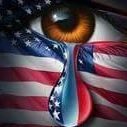Going from left to right, which African country's flag contains three stripes of green, gold and red?
The national flag of Mali features three equal vertical stripes of green, gold, and red. It is almost identical to the flag of Guinea, except the colours are in the reverse order. The colours traditionally represent the Pan-Africanism movement, but they also hold individual meaning. The green stands for fertility of the land, gold represents purity, and the red symbolizes the blood shed in the struggle to gain independence from the French.
From the 1880s until 1959, Mali belonged to the French under the name French Sudan. While under their control, the country used the colours of the flag of France (blue, white and red), but with a black 'kanaga', the shape of a man with arms raised to the sky, in the centre. According to the Dogon society, the man represented their Creator God, Amma.
When Mali gained independence in 1959, they changed the colour of their flag to green, gold and red, but retained the 'kanaga' symbol. The man was eventually removed in 1961 because Muslim societies, which made up 90% of the population, complained about the visual representation of a living being and the reference to a foreign god.
Mali is a landlocked country in West Africa bordered by Algeria, Niger, Burkina Faso, Côte d'Ivoire, Guinea, Senegal and Mauritania. It is one of the poorest countries in the world, with 65% of its land area taken up by the Sahara desert.
More Info:
en.m.wikipedia.org


